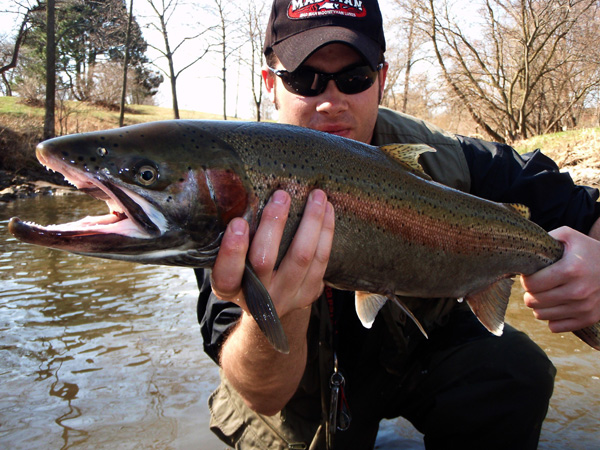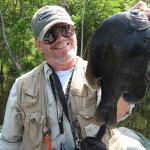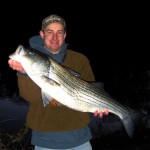By: Blake Hamilton – Date Posted: March 22, 2011
As winter slowly releases the Great Lakes region from its icy grip, it becomes apparent that spring is on its way. Snow melt, spring showers, and warmer temperatures cause local tributaries to swell. The quick influx of fresh water into the river system and rising water temperatures attract spawning fish by the hundreds (if not thousands) into the river systems.
Its steelhead season in Southeast Wisconsin and thing are just about to heat up. Spring is a high percentage time to find spawning steelhead in Lake Michigan’s tributaries. Three out of the four strains stocked in Lake Michigan spawn between late February and the end of May.
The Skamania and Chambers Creek strains enter the systems late in the previous year. Plenty of these fish will hold over through the winter in the rivers and will finally spawn the following spring. Skamanias typically spawn first right around the end of the winter (late February) followed closely by the Chambers Creek in the early spring (between March and April). Meanwhile, the Ganaraskas don’t enter the river until spring and they typically are the last ones to drop their eggs, right around the end of the spring (April through May).
With so many fish moving into the river systems, Wisconsin truly is a fly fisherman’s paradise that offers anglers a chance to tangle with some big and strong lake run fish from the fall salmon run all the way through to the beginning of summer.
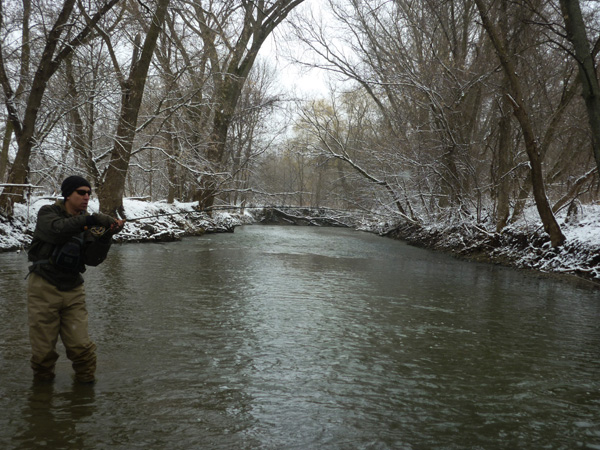
Conditions:
Early March in Wisconsin looks a lot like the winter season anywhere else. Freezing temperatures and chances for snow or rain are still highly possible. Anglers should be cognizant of the weather before heading out to fish.
There is so much more to consider than just the weather itself when is comes to steelheading. Such factors are water clarity, water temperature, river height are important, but the current flow is by far the most critical of all.
Current flow can be described as the volume of water that is passing through a given river per second. Increases in the flow act as a stimulators that draw in fresh fish in from the harbors and lake. When water levels are on the rise, steelhead become motivated to push further up river in search of acceptable spawning gravel beds.
Early season snow melt is the first thing that impacts a river’s flow. Years with modest amounts of snow, expect to find the early flow much lower. Conversely, years with large snow melts expect the starting season flows to be much higher. After the initial spike subsides, rain is the only thing left to influence “flow”. After a good rain the small rivers will peak quick and drop quick. The larger watersheds will take more time to rise and are slower to go back down.
The USGS monitors river discharge and river height. They publish their information online in easy to read graphs. The water discharge is measured by CFS (cubic feet per second) and the height is measured in feet. It’s important to first understand what a safe flow is for wading and knowing at what level your river fishes best.
Once you understand gauge heights and all other numbers, timing is the only thing standing in your way. Small rivers like the Pike River in Kenosha, Wisconsin fish best between 75-150 CFS. Medium rivers like the Root River in Racine, Wisconsin fish best between 150-250 CFS and larger rivers like the Milwaukee River in Milwaukee, Wisconsin fish best between 200-350 CFS.
The USGS will give you the current river flow in real time and will plot this information on the graph. Studying these graphs will help you to understand when fresh fish are moving into the rivers. They are key indicators to the beginning and end of spawning runs. The USGS will help you pattern fish based on flows without ever stepping foot out of the house. You will be quickly able to identify if the water is on the rise or the fall. Lastly, they will also save you some wasted time driving to a river when its blown out or running high and muddy.
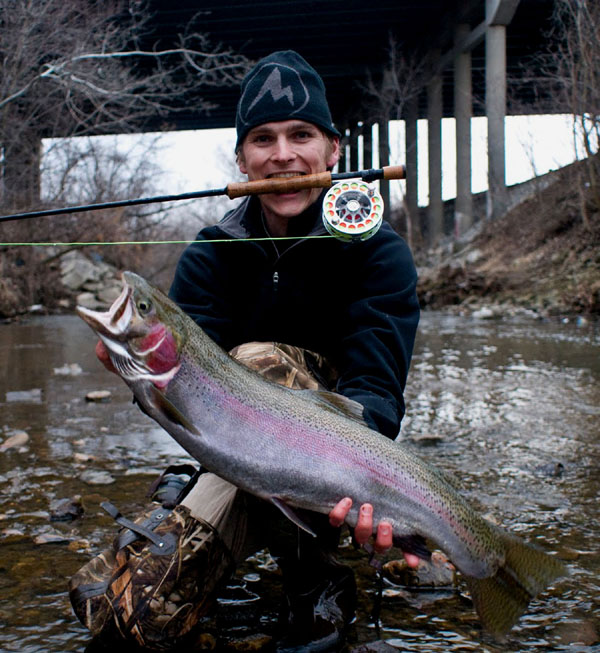
Location:
Ever hear the saying that 10% of the water holds 90% of the fish? This saying holds true here. But where do you start?
Deep Water, skinny water, slack water, fast water, pools, runs, riffles, bends and cuts will all hold fish, but breaking down an individual river takes hours of exploration.
Rivers are best learned during those periods when river levels and flows are at their lowest. Getting intimate with every high percentage spot will serve you well when the water is considerably higher. If you also fish for salmon in the fall it’s always good to pay special attention to where the salmon stack because come spring, steelhead will capitalize on many of the same gravel beds.
Early in the season and after big rain the deeper pools down and around the river mouth can be hot producers. As fish have time to migrate and make their way through the river focus your attention to the best pools, runs and riffles. Any natural or man-made barriers are also instant hot spots. Lunker structures and undercut banks are fish magnets and will usually always have at least one fish tucked underneath. Pools around dams and beneath natural rock barriers are areas where numerous fish will congregate at any given time. Areas where rivers contract create natural funnels and shouldn’t be over looked.
Once the females start to move on to their beds they are typically easy targets to spot and usually very aggressive to anything swimming through their nest. Slack water downstream for nesting females are good spots to find males waiting for to the chance to push up a mate. Sight fishing is a lot harder in the spring than it is in comparison to fall. Steelhead are much better at remaining hidden than Chinooks are. When conditions are super clear they feel exposed and threatened and will often hold under cover or in the deeper sections of the river. When rivers are stained, steelhead will feel more at ease in skinnier water situations.
My best suggestion for putting a pattern together is to stay mobile and switch flies often. We normally sight fish the best looking runs first and then slow down the pace to work the deeper slack water pools that are directly adjacent. If nothing happens right away, change up your fly pattern give yourself 10 more minutes. After that, make a new move.
It is common for us to be out for a half day and cover several miles of water in that time span. Just because there was fish there yesterday speaks nothing for today. Fish are constantly moving throughout the river spurred on by the ever-fluctuating water levels. Once you establish a pattern of both location and presentation it makes picking spots more efficient and a lot easier.
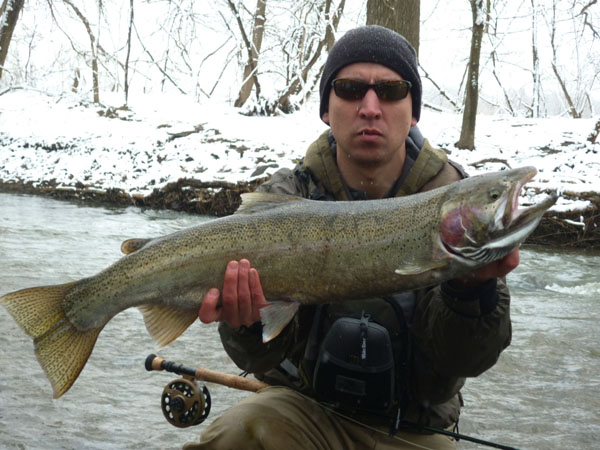
Presentation:
Streamers should be a mainstay in any steelhead angler’s fly box. Most are fished down and then across the current on what is called the “swing”. Typically, this would be done with a sinking line but can still be pulled off with the normal weight-forward floating line. The acceleration on the down swing is usually what triggers strikes from aggressive fish.
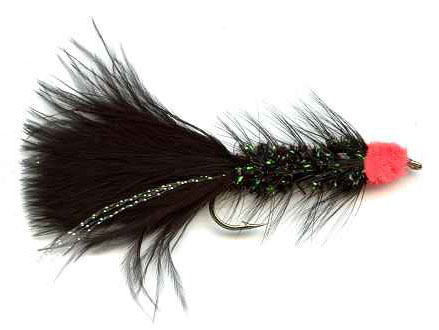
Streamers and wet flies are versatile and can also be stripped across the slack water pools, one of my favorite techniques, which sometimes results in the most explosives strikes of all. Getting down the right cadence is important and most strikes come just after the first strip following a pause. Your rod will load up with pressure and many times the fish will be hooked just from the stripping action you imparted on the fly.
If your box only has available room for one streamer, fill the space with an egg-sucking leech. The ESL is a Great Lakes favorite that has brought countless fish to net. Other favorites are wooly buggers, Alaska-boo’s, sculpins, speys, muddlers and any other baitfish or leech imitations.
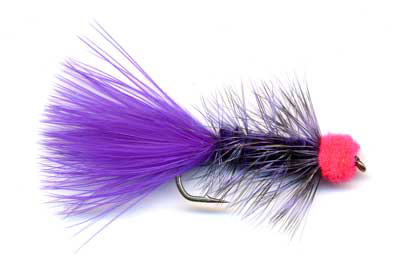
Egg patterns are top steelhead producers especially after the spawn begins. These fish are ravenous predators when it comes to their own roe.
Egg patterns are fished on the drift and throwing mends into the line is important for keeping the drift slow and natural. Eggs are quite often seen fished under indicators normally weighted with some form of shot.
When fishing eggs, keep in mind that if you are not bumping the bottom you are not fishing deep enough. The strike on an egg fly isn’t vicious at all and steelhead are more likely to just sip the fly in. Your indicator will look very similar as to when your just snagged on bottom. Don’t be shy and go ahead and give your line a rip. Various sizes, and colored eggs, quite often have a different effect on fish. Popular eggs include glo-bugs, sucker spawn, yarn flies, and estaz eggs.
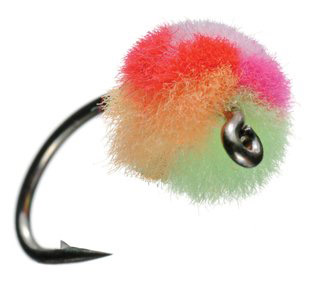
Nymphs are often fished alone or as a dropper off the back of a streamer or an egg. They are fished in the same fashion as an egg pattern, mostly drifted under indicators with split shot to get the bait down to fish level.
Steelhead nymphs should look a lot like the nymphs commonly fished for trout. In fact, just upsize your hook size and almost all your trout nymphs can be converted to steelhead tackle. Favorites include hares ears, pheasant tails, prince nymphs, brassies, stones, and so forth.
Spawn is often overlooked by fly fishing purists but I’m not one of those people anymore. The effects of real trout eggs in the form of spawn sacs sometimes has a magical effect on fish.
For instance, I was schooled on the Root River last year by a good friend who switched over from drifting home made artificial eggs to the real thing. I recall looking at him and shaking my head in disgust. I wasn’t throwing spawn on the fly rod, so you have to be joking me!
I continued fishing my streamer and chuckled to myself. On his first cast the spawn rolled through the same pool he had just worked for almost an hour prior with artificials. At the end of that drift he brought his arm up with the intentions of roll casting back to the top of the pool. Just as the bait came rocketing out of the water, so did an angry charging steelhead. This fish came clean out of the water after those eggs!
Unfortunately it was already too late. He had already pulled the bait away from the fish. The very next cast he made a deliberate slower presentation through the same pool throwing mends in the line to keep the spawn ticking on the bottom. This time it worked and he hooked and landed a real beauty of a steelhead.
He ended up going three-for-four on strikes after that, and it seemed like my sole purpose for the rest of the day was to assist in landing his fish.
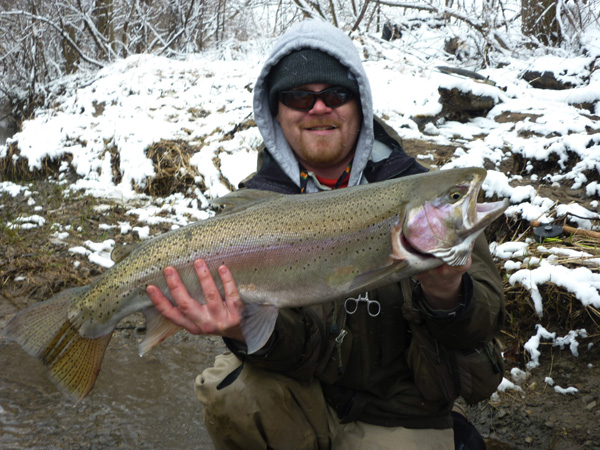
Spawn is fished the same manner as an egg pattern. However, it is important to use a small bait holder or circle hook to penetrate the top of the spawn sac. Toss it to the top of the pool, and drift away. Spawn tends to excel in high water conditions and should never be an overlooked option.
Weighty Issues:
When trying to get flies down to the fish you will often find yourself in the position of needing some sort of split shot. In my opinion, the smaller the weight, the better.
Bass Pro Shops has a split shot called “clam shots” and they perform as a great application in the fly fishing world. They are smaller than virtually any other split shot on the market and are perfect for presenting just the right amount of weight. My advice is to add one split shot at a time until you find just the perfect amount.
Strike Indicators:
Indicator is just another fancy word used by fly fishing cults to describe bobbers.
Trust me I’ve tried them all. There are many different types and brands on the market. Some I like and some I dislike.
I really dislike the putty because it doesn’t last for more then a few months before the whole jar starts to dry out. After it dries, it has the tendency to fly off on hook sets and snags. In addition, yarn indicators are fine for a few casts but become waterlogged and then begin to sink, thus negatively affecting the presentation. Also, the football shaped foam indicator with the rubber tubing in the middle comes off the line too easy. Far too often I’m watching them float downriver after popping of my line.
The indicators that work for me are the pinch on foam indicators that fold over the line. Their backside is a sticker which makes them easy to apply but hard to remove. These foam indicators keep a low profile in the water and buy far are the cheapest type.
Another indicator I like to employ is the simple foam ball that is attached to the line with a tooth pick. These are easy to change out and are quite visible in the water. They come in different sizes and shapes and are also very cost effective.
Thingamabobbers are by far my favorite indicator and they are attached by looping it in the line. They wont ever pop off and are the most durable and easy to remove if needed, but are a bit more expensive in comparison with most other indicators.
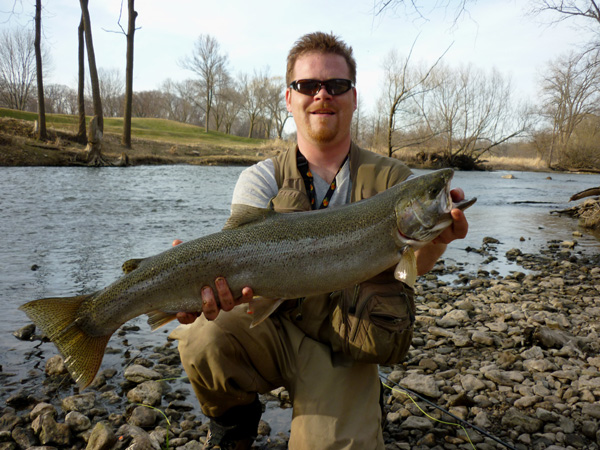
Rod And Reel:
For somebody just starting to get into steelhead on the fly, I would recommend a very basic 8 weight, 9 foot rod. This is a very standard weight for steelhead and will have the backbone to do battle with some of the larger fish that you will come across as you venture out into the tributaries. For beginners I suggest using an all purpose weight forward floating line. This will be able to be converted to fish almost every situation.
When purchasing a fly reel, it isn’t necessary to look for an expensive brand with a super smooth drag. In fly fishing the reel is there just to hold your fly line. The drag should be applied with just the palm of your hand placed on the spool of the reel.
Success:
There is no doubt that a good day of steelhead fishing is having the opportunity of being able to hook one fish. Other days, you might go out and catch a half dozen.
From their sheer size, to their acrobatic jumps, throw in your own hand made lures into the mix and you might have just found the most rewarding fish to ever be caught on the fly.
Success will ensue when you have determined the right location for the conditions matched with proper presentation. One thing for sure is that spring is just around the corner and of course, you’re never going to catch one sitting on your couch.
